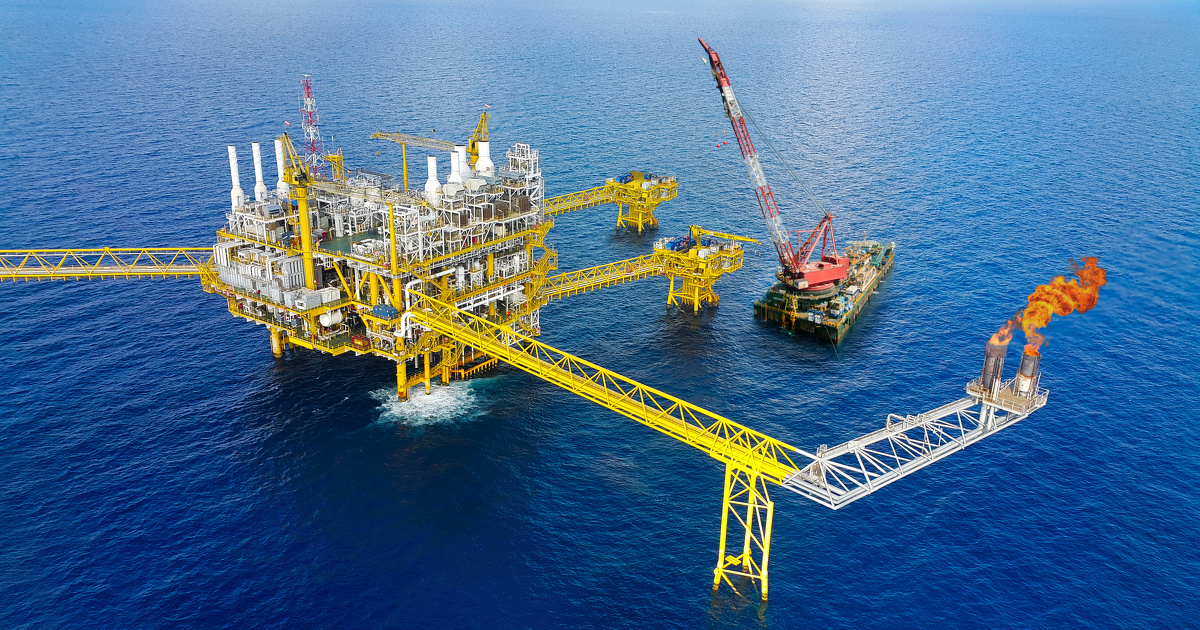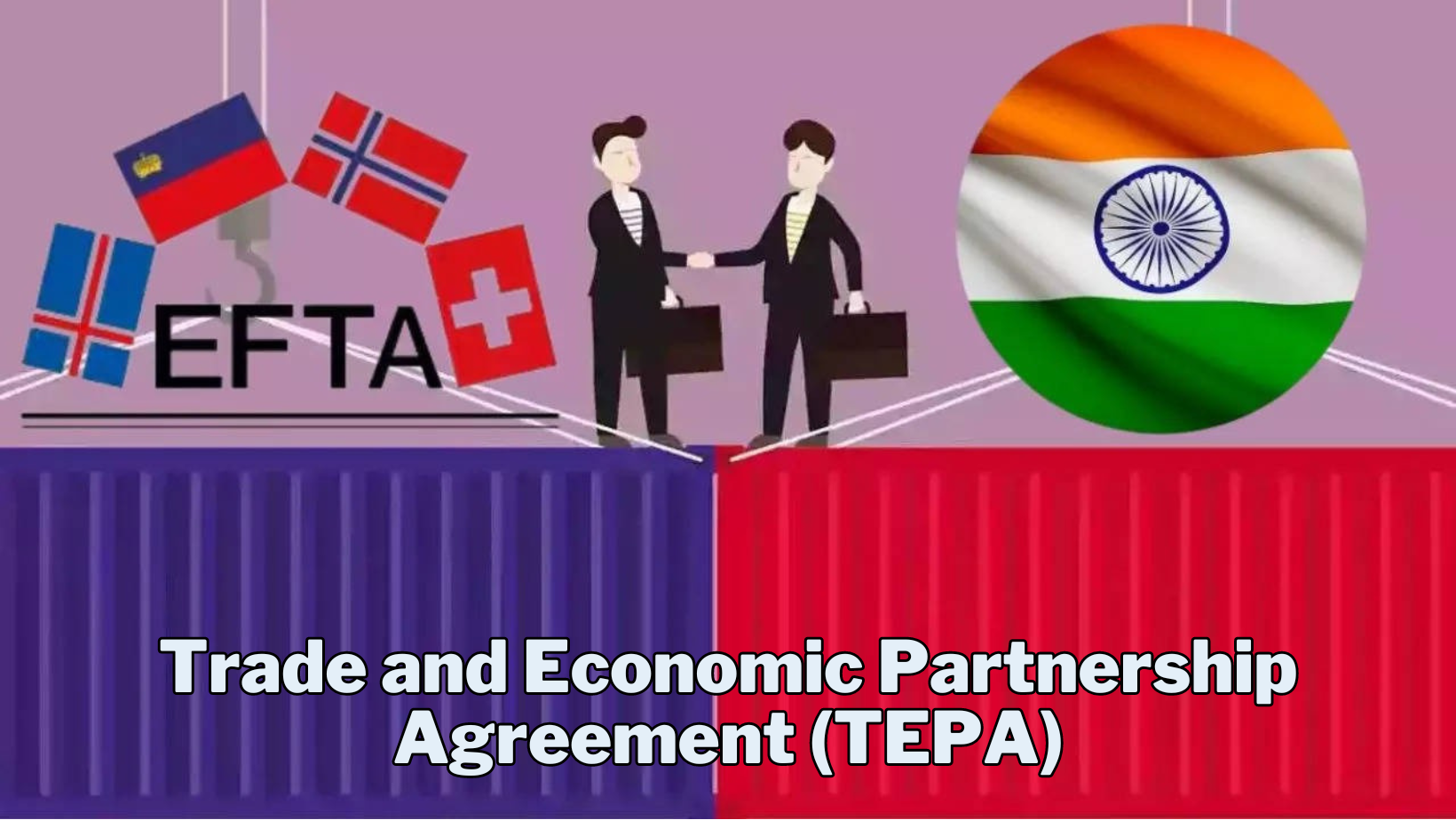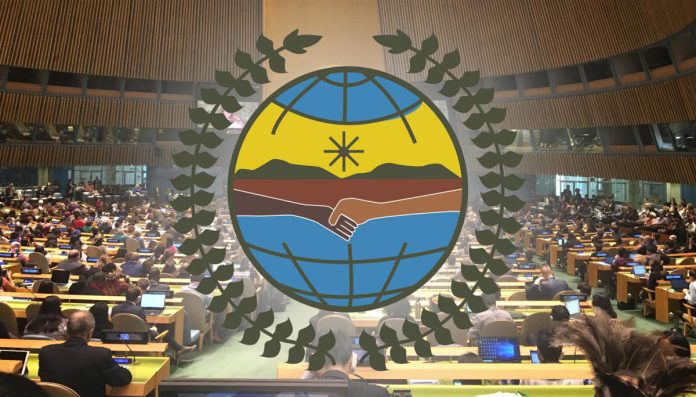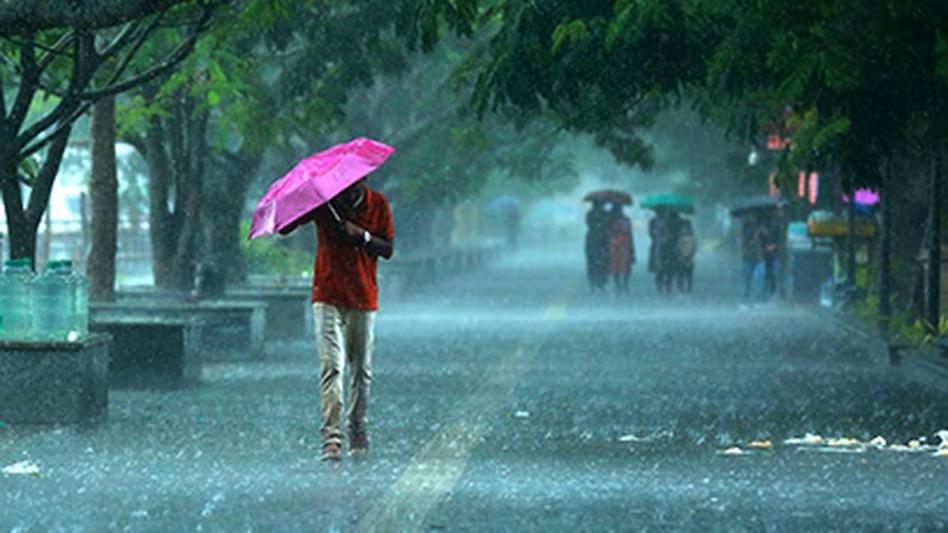Hydrocarbon Extraction: Processes, Methods, Environmental Impact

- 16 Apr 2024
Why is it in the News?
Over millennia, mighty geological processes in the earth’s crust heated and compressed together pieces of life forms that had been dead for a while.
What Is a Hydrocarbon?
- The term hydrocarbon refers to an organic chemical compound that is composed exclusively of hydrogen and carbon atoms.
- Hydrocarbons are naturally occurring and form the basis of crude oil, natural gas, coal, and other important energy sources.
- They are highly combustible and produce carbon dioxide, water, and heat when they are burned.
- As such, hydrocarbons are highly effective as a source of fuel.
Where are Hydrocarbons Located?
- Hydrocarbons, such as natural gas, coal, crude oil, and petroleum, are typically found in underground rock formations within reservoirs.
- These reservoirs form when less resistant rocks are overlayed by more resistant ones, creating a lid that traps hydrocarbons beneath.
- Petroleum geology tools, methods, and techniques are used to assess these rocks for their porosity and permeability, determining how much hydrocarbons they can hold and how easily they can flow through them.
- Kerogen, lumps of organic matter, is the primary source of hydrocarbons within these subterranean rocks.
- Kerogen can be deposited from lacustrine, marine, or terrestrial ecosystems.
- Over time, surrounding rocks can become warmer and more compactified, exerting forces on kerogen that cause it to break down into various hydrocarbons, such as waxy oils, light oils, gas, and coal.
- Petroleum geologists locate and characterize kerogen-containing source rocks, studying their geophysical and thermal properties.
- They conduct modeling activities, analyze observational data, and dig exploration wells to estimate hydrocarbon quantities.
- Once a profitable hydrocarbon source is identified, drilling can commence.
How are the Hydrocarbons Accessed?
- Drilling and reservoir engineers employ various methods to extract hydrocarbons efficiently without damaging the reservoir.
- The process begins with creating a production well, strategically positioned to maximize drainage.
- A drilling machine, consisting of a drill pipe, drill collars, and a drill bit, is used to create the well.
- As drilling progresses, steel casings are lowered into the tunnel, and cement slurry is pumped into the gap between the casings and the tunnel's outer edge.
- The solidifying cement prevents cave-ins and blocks surrounding fluids from entering the well.
- The tunnel is filled with drilling fluid, which cools the drill bit and carries rock fragments to the surface for removal.
- Controlling drilling fluid pressure is crucial to prevent hydrocarbon eruptions. Modern drilling setups use blowout preventers to manage such events.
- Meanwhile, mud-logging records rock properties at different depths, aiding the process.
- Drill pipes can be extended or replaced as needed during the drilling process, which is now conducted by advanced drilling rigs equipped with power sources.
- Offshore rigs feature additional facilities to ensure stability and facilitate extraction through the water column.
How are the Hydrocarbons Extracted?
- Upon drilling the production well, it must be prepared for hydrocarbon drainage, called completion.
- Engineers remove the drill string and perforate the casing, allowing hydrocarbons to flow into the well and rise to the surface.
- A narrower tube encourages one-directional flow and controls outflow using valves.
- When pressure differences are insufficient for natural fluid ascent, pump jacks or other artificial lift methods can aid extraction.
- Workovers may be required to maintain or improve production efficiency over time.
- Extraction phases include primary (relying on natural processes), secondary (inducing artificial pressure), and tertiary (enhanced recovery methods, like steam injection) phases, each contributing to the total hydrocarbon yield.
What Happens When a Well is Depleted?
- Wells may cease extraction before depletion if operations become unprofitable.
- Properly plugging abandoned wells prevents hydrocarbon and gas leakage into surrounding environments, yet deterioration and failure of plugs remain concerns.
- Decommissioning is the most thorough but often expensive solution.
- Improperly abandoned wells contribute significantly to methane emissions, alongside emissions from extraction and component use.
- A 2018 study estimated that 9,000 oilfields in 90 countries released 1.7 billion tonnes of carbon dioxide in 2015 alone.
- Overall, the pursuit of subterranean hydrocarbons, including natural gas, coal, crude oil, and petroleum, employs various extraction methods.
- However, it is essential to consider the environmental impact and sustainability of these operations.
Thiruvalluvar

- 16 Apr 2024
Why is it in the News?
Seeking to connect with the people of Tamil Nadu where his party is trying to gain a foothold, Prime Minister Narendra Modi recently announced that the BJP will work towards building Thiruvalluvar cultural centers all over the world.
Who was Thiruvalluvar?
- Thiruvalluvar, the author of the revered 'Thirukkural' or 'Sacred Couplets', remains a figure of historical debate.
- His exact period and religious affiliation are uncertain, with proposed dates ranging from the 3rd or 4th century CE to the 8th or 9th century.
- Various groups regard him as a Hindu sage, a Jain sage, or a Dravidian saint with no religious identifiers except his Dravidian heritage.
- Accounts of Thiruvalluvar's origins are diverse.
- In Edward Jewitt Robinson's 1873 book, 'Tamil Wisdom: Traditions Concerning Hindu Sages and Selections from their Writings', he described Thiruvalluvar as a "Pariah" with a mother from "the low class" and a possibly Brahmin father.
- According to this narrative, Thiruvalluvar was found in a grove near a Shiva temple in Mayilapur and was taken in by the wife of a high-ranking Velalan before being entrusted to a "Pariah family."
- Despite the ambiguity surrounding Thiruvalluvar's identity, his wisdom-laden verses in 'Thirukkural' continue to influence and inspire generations across religious and cultural divides.
Why does Thiruvalluvar matter?
- Thiruvalluvar, affectionately called Valluvar by Tamils, is revered as a cultural and moral icon across caste and religious lines.
- His 'Thirukkural', a compilation of 1,330 couplets, is an integral part of Tamil culture, comparable to the Bhagavad Gita or Ramayana in North Indian Hindu households.
- It serves as a foundational text for ethical living and tracing Tamil cultural roots.
- Beyond Tamil Nadu, Thiruvalluvar's wisdom is celebrated in the context of ancient India's rich philosophical heritage, emphasizing morality and ethics.
- His enduring influence is evident as successive Indian finance ministers reference his teachings in annual Budget speeches.
- However, competing claims to Thiruvalluvar's legacy have sparked controversy, such as the 2019 debate surrounding the BJP's depiction of him in saffron robes instead of traditional white garments.
- Despite these disputes, the profound impact of Thiruvalluvar's teachings continues to resonate across various cultures and languages, fostering unity and moral guidance.
Why Are Political Parties Asserting Thiruvalluvar's Legacy?
- Political parties, both national and regional, have long vied for ownership of Thiruvalluvar's legacy. For instance, the BJP, with a limited grassroots presence in Tamil Nadu, seeks to bolster its standing through the appropriation of Tamil saints and icons.
Trade and Economic Partnership Agreement (TEPA)

- 16 Apr 2024
Why is it in the News?
The new approach to intellectual property and investment through FTAs accepts an IP maximalist agenda of the United States Trade Representative; it threatens to upset the fine balance between public and private interests and push India away from essential innovations.
What is the Trade and Economic Partnership Agreement (TEPA)?
- The TEPA is a pact designed to foster trade and investment opportunities between India and the European Free Trade Association (EFTA).
- It endeavors to diminish or eliminate tariffs and non-tariff barriers across various product categories.
Objectives:
- Facilitate trade and investment by reducing tariffs and non-tariff barriers.
- Ensure equitable and transparent market access for service providers and investors.
- Enhance cooperation concerning the protection and enforcement of intellectual property rights.
- Streamline trade procedures, promote customs cooperation, and establish effective mechanisms for dispute resolution.
Coverage:
- The agreement encompasses 14 chapters, addressing key areas such as:
- Trade in goods
- Rules of origin
- Intellectual property rights (IPRs)
- Trade in services
- Investment promotion and cooperation
- Government procurement
- Technical barriers to trade
- Trade facilitation
- By addressing these comprehensive aspects, the TEPA seeks to bolster economic collaboration and foster mutually beneficial outcomes for both India and EFTA member states.
What is the European Free Trade Association (EFTA)?
- EFTA is an intergovernmental organization of four member countries that are not part of the European Union (EU): Iceland, Liechtenstein, Norway, and Switzerland.
- The association was set up in 1960 to promote closer economic cooperation and free trade in Europe.
How important is EFTA?
- Iceland, Liechtenstein, Norway, and Switzerland have a combined population of less than 14 million.
- But their association punches above its weight in terms of trade figures.
- In 2021, EFTA was the tenth-largest trader in the world in merchandise trade and the eighth-largest in trade in services.
What is EFTA’s history?
- EFTA was established in 1960 by seven countries: Austria, Denmark, Norway, Portugal, Sweden, Switzerland, and the United Kingdom.
- Iceland and Liechtenstein joined EFTA in 1970 and 1991, respectively.
- Denmark, the UK, Portugal, Austria, and Sweden then left EFTA to join the EU between 1973 and 1995.
UN Permanent Forum on Indigenous Issues

- 16 Apr 2024
Why is it in the News?
As the 23rd session of the UN Permanent Forum on Indigenous Issues begins in New York, United States on April 15, participants pointed out that though recognition of indigenous territories is increasing, it is not happening at the pace the planet needs.
About the UN Permanent Forum on Indigenous Issues:
- Established in 2000, the UNPFII serves as an advisory body to the United Nations Economic and Social Council (ECOSOC), focusing on indigenous issues related to economic and social development, culture, environment, education, health, and human rights.
- Alongside the Expert Mechanism on the Rights of Indigenous Peoples and the Special Rapporteur on the Rights of Indigenous Peoples, the UNPFII is one of three UN entities mandated to address Indigenous Peoples' issues.
The Permanent Forum's primary objectives include:
-
- Providing expert advice and recommendations to the Council, United Nations programs, funds, and agencies.
- Raising awareness and fostering integration and coordination of indigenous issues within the UN system.
- Preparing and disseminating information on indigenous issues.
Membership and Structure
- The UNPFII consists of sixteen independent experts who serve three-year terms and may be re-elected or re-appointed for one additional term.
- Eight members are nominated by governments, while the remaining eight are nominated directly by indigenous organizations from their respective regions.
- Following each session, the UNPFII submits a report containing recommendations and draft decisions to the ECOSOC, contributing to global efforts to address and improve the well-being of Indigenous Peoples worldwide.
Long Period Average (LPA) Rainfall

- 16 Apr 2024
Why is it in the News?
Ministry of Earth Sciences announced recently that the country as a whole is likely to receive above-normal rainfall during the southwest monsoon from June to September 2024.
What is the Long Period Average (LPA) of Rainfall?
- The India Meteorological Department (IMD) predicts a “normal”, “below normal”, or “above normal” monsoon in relation to a benchmark “long period average” (LPA).
- According to the IMD, the “LPA of rainfall is the rainfall recorded over a particular region for a given interval (like month or season) average over a long period like 30 years, 50 years, etc”.
- While this quantitative benchmark refers to the average rainfall recorded from June to September for the entire country, the amount of rain that falls every year varies from region to region and from month to month.
- Therefore, along with the countrywide figure, the IMD also maintains LPAs for every meteorological region of the country — this number ranges from around 61 cm for the drier Northwest India to more than 143 cm for the wetter East and Northeast India.
Why LPA is Needed?
- The IMD records rainfall data at more than 2,400 locations and 3,500 rain-gauge stations.
- Because annual rainfall can vary greatly not just from region to region and from month to month, but also from year to year within a particular region or month, an LPA is needed to smooth out trends so that a reasonably accurate prediction can be made.
- A 50-year LPA covers for large variations in either direction caused by freak years of unusually high or low rainfall (as a result of events such as El Nino or La Nina), as well as for the periodic drought years and the increasingly common extreme weather events caused by climate change.
What is the Range of Normal Rainfall?
- The IMD maintains five rainfall distribution categories on an all-India scale. These are:
- Normal or near normal, when the percentage departure of actual rainfall is +/-10% of LPA, that is, between 96-104% of LPA;
- Below normal, when the departure of actual rainfall is less than 10% of LPA, that is 90-96% of LPA;
- Above normal, when actual rainfall is 104-110% of LPA;
- Deficient, when the departure of actual rainfall is less than 90% of LPA; and
- Excess, when the departure of actual rainfall is more than 110% of LPA.
